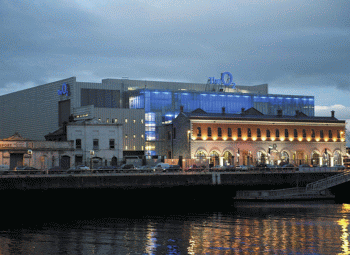 With new building regulations and ambitious targets for carbon reduction, it is important for all buildings in the UK to maximise their potential in terms of energy efficiency. KNX technology, which celebrated its 20th anniversary in October, can play a key role in achieving this. Revisions to Approved Document L of the Building Regulations has recently come into force, meaning that practical measures to make buildings more energy efficient will help in cutting emissions as we strive for a zero carbon future.
With new building regulations and ambitious targets for carbon reduction, it is important for all buildings in the UK to maximise their potential in terms of energy efficiency. KNX technology, which celebrated its 20th anniversary in October, can play a key role in achieving this. Revisions to Approved Document L of the Building Regulations has recently come into force, meaning that practical measures to make buildings more energy efficient will help in cutting emissions as we strive for a zero carbon future.
To achieve this, KNX Open Standard building technology is playing an increasingly prominent role in maximising the combined reduction in energy usage by all the key building services.
Today’s commercial buildings are far more energy efficient in design than they were – even as little as five years ago. However, there is a limit to the efficiency that can be achieved through traditional design and materials alone. In the past, buildings have been designed as ‘insulated elements’ from their environment.
Indoor comfort – visual, thermal and air quality – has been delivered by over designing artificial lighting and HVAC systems. Furthermore, the traditional fragmented approach to the management of building services has been another hindrance to achieving optimum energy efficiency. For example, the creation of an energy efficient heating system has frequently ignored other factors such as the need for complementary ventilation and the impact of solar gain.
Meeting legislation requirements
As well as revisions to Approved Document L, the impact of regulations such as CRCEES and the demands of the European EPBD regulations mean that building managers and owners need to take increasingly more effective measures to realise reduced energy consumptions and avoid financial penalties.
 The need for a holistic approach to building control systems which connects and unites all the services, has never been greater, as such a tactic can cut through the boundaries of proprietary technology and maximise energy saving potential.
The need for a holistic approach to building control systems which connects and unites all the services, has never been greater, as such a tactic can cut through the boundaries of proprietary technology and maximise energy saving potential.
Facades
Central to this is the concept of bioclimatic facades through which the facade or skin of a building is used to manage/control the effects of outside environmental factors – solar gains, light, air temperature, air quality, noise and so on.
By using this approach buildings can be reintegrated into their environment and benefit from the abundant availability of natural light, solar energy and wind. This approach also creates an energy efficient, comfortable indoor environment which focuses on the demands of the building’s occupants and achieves the energy reduction aims of the building’s stakeholders.
Lighting
By managing the facade through KNX controlled solar shading, such as blinds and shutters, the indoor environment can be closely controlled and adjusted as required. In terms of lighting control, the approach is to prioritise the use of natural light and then add-on artificial lighting where and when required.
Controls, such as presence detectors and timers next to, for example, high efficiency LED lighting, will allow the lighting levels required by the user to be met in a totally energy efficient way.
HVAC
With HVAC, the main issues within a building are those of solar gain and internal heating loads. By using or blocking the solar energy, in the right way through effective facade management, not only can the result be a reduced capital investment requirement in terms of smaller capacity appliances/boilers, but also operational costs will be reduced.
Using KNX to control devices for integrated facade management and other building services becomes a cost neutral investment as energy savings can be made immediately to offset any investment.
Through KNX, facade products are integrated seamlessly with other building services and their performance can be monitored using smart metering. The information can be diagnosed via the internet or LAN to provide a complete real time picture of energy consumption and appliances can be adjusted and managed accordingly.
Anniversary
An event to celebrate 20 years of KNX technology was held in London during October, and served to highlight the green credentials and environmental benefits of KNX technology in today’s commercial and residential buildings. Key to the event were presentations from prominent KNX members on how KNX can integrate building facades, lighting control and HVAC systems to maximise energy savings.

